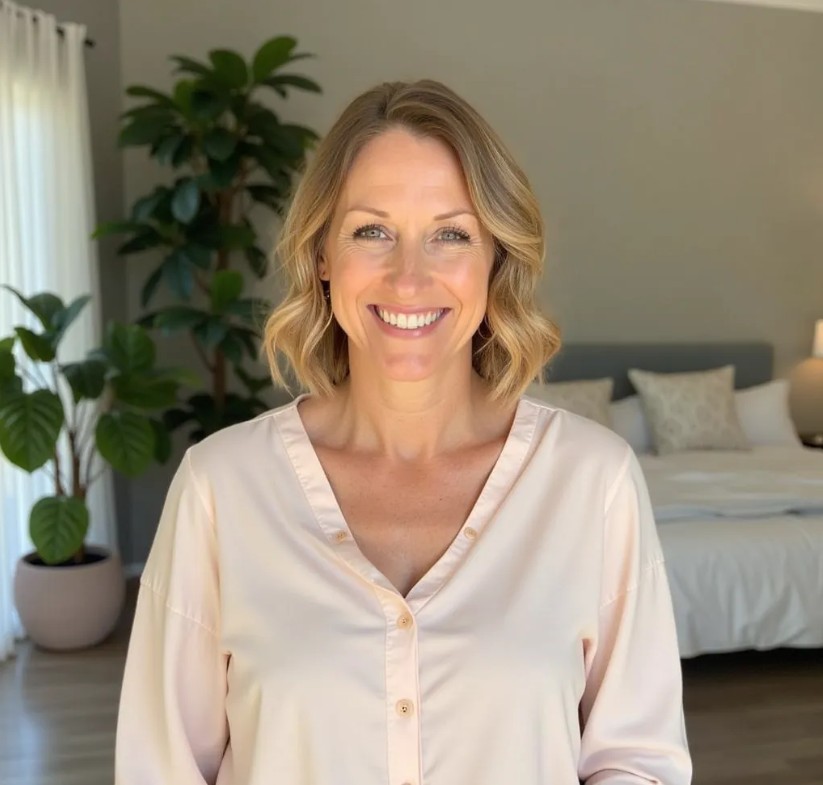
My Husband Died—Our Relationship Didn’t: Continuing Bonds After Loss
Reading time: 12 minutes
When Sarah’s husband Michael died unexpectedly at 42, well-meaning friends told her she needed to “move on” and “let go.” But three years later, Sarah discovered something profound: her relationship with Michael hadn’t ended—it had simply transformed. Like millions of widows and widowers worldwide, she was learning to navigate continuing bonds, a revolutionary concept that’s reshaping how we understand grief and love after loss.
Table of Contents
- Understanding Continuing Bonds Theory
- Practical Ways to Maintain Connection
- Navigating Common Challenges
- Healthy vs. Unhealthy Continuing Bonds
- Frequently Asked Questions
- Your Path Forward: Honoring Love That Endures
Understanding Continuing Bonds Theory
The traditional grief model suggested that “healthy” mourning meant eventually “letting go” of the deceased. However, groundbreaking research by Dennis Klass, Phyllis Silverman, and Steven Nickman in the 1990s revealed a different truth: healthy grief often involves maintaining an ongoing relationship with the deceased.
What Continuing Bonds Actually Means
Continuing bonds aren’t about denial or inability to accept death. Instead, they represent the natural human tendency to maintain emotional connections that transcend physical presence. Dr. Nigel Field’s research shows that 96% of bereaved individuals report some form of ongoing connection with their deceased loved one.
Key characteristics of continuing bonds include:
- Ongoing internal conversations with the deceased
- Sensing their presence during significant moments
- Making decisions based on their values or preferences
- Feeling their guidance during difficult times
- Maintaining rituals that honor their memory
The Science Behind Lasting Connections
Neuroscience research reveals that our brains don’t simply “delete” significant relationships after death. The neural pathways formed through years of shared experiences remain active, explaining why continuing bonds feel so natural and authentic to many bereaved individuals.
Research Insight: A 2019 study published in the Journal of Death and Dying found that individuals who maintained continuing bonds showed better psychological adjustment and lower rates of complicated grief compared to those who focused solely on “letting go.”
Practical Ways to Maintain Connection
Maintaining continuing bonds isn’t about elaborate rituals—it’s about finding meaningful ways to honor your relationship that feel authentic to you. Here are evidence-based approaches that many find helpful:
Internal Connection Strategies
Conversational Bonds: Many bereaved individuals naturally continue “talking” to their deceased spouse. This might involve sharing daily events, asking for guidance, or simply expressing love. Research shows this practice can reduce feelings of loneliness and provide emotional comfort.
Memory Integration: Rather than avoiding thoughts of your spouse, intentionally recall positive memories during quiet moments. Create a mental “highlight reel” of your favorite shared experiences to access when you need comfort.
External Expression Methods
| Connection Method | Frequency of Use | Reported Comfort Level | Practical Implementation |
|---|---|---|---|
| Letter Writing | 72% of bereaved spouses | High (8.3/10) | Weekly or during significant events |
| Memorial Rituals | 68% of bereaved spouses | Very High (9.1/10) | Birthdays, anniversaries, holidays |
| Dream Connections | 45% of bereaved spouses | High (8.7/10) | Natural occurrence, can’t be forced |
| Legacy Projects | 38% of bereaved spouses | Very High (9.4/10) | Ongoing charitable work or creative projects |
Real-World Case Study: Maria’s Journey
Maria, whose husband Roberto died in a car accident, initially struggled with guilt over continuing to feel connected to him. Through grief counseling, she learned to embrace these bonds. She now:
- Keeps a photo of Roberto in her kitchen and shares her day with him while cooking his favorite recipes
- Volunteers at the animal shelter where they adopted their dog, feeling his presence in this shared passion
- Wears his wedding ring on a chain, touching it when making important decisions to “ask” for his input
“I’m not stuck in the past,” Maria explains. “I’m carrying the best parts of Roberto with me into my future.”
Navigating Common Challenges
While continuing bonds can be healing, they also present unique challenges that require thoughtful navigation.
Social Pressure and Misunderstanding
Unfortunately, not everyone understands continuing bonds. You might encounter friends or family who worry you’re “not moving on” or suggest you need professional help. Dr. Tony Walter, a leading grief researcher, notes that these concerns often stem from outdated grief models rather than genuine understanding of healthy mourning.
Strategies for handling social pressure:
- Educate close friends and family about continuing bonds research
- Set clear boundaries about what you’re comfortable discussing
- Find support groups where continuing bonds are understood and normalized
- Remember that your grief journey is uniquely yours
Balancing Connection with New Relationships
One of the most complex challenges involves forming new romantic relationships while maintaining bonds with your deceased spouse. This isn’t about choosing between past and present—it’s about creating space for both.
Expert Insight: “Healthy continuing bonds don’t prevent new relationships—they can actually enhance them by demonstrating your capacity for deep, lasting love,” notes Dr. Phyllis Silverman, co-author of Continuing Bonds.
Healthy vs. Unhealthy Continuing Bonds
Not all continuing bonds are beneficial. Understanding the difference between healthy connection and potentially problematic attachment is crucial for your wellbeing.
Signs of Healthy Continuing Bonds
Comfort and Growth Indicators:
Healthy continuing bonds typically:
- Provide comfort without interfering with daily functioning
- Encourage rather than inhibit personal growth
- Support rather than replace social connections
- Feel natural and meaningful rather than forced or obsessive
Warning Signs to Monitor
While continuing bonds are generally healthy, certain patterns may indicate need for professional support:
- Isolation: Using the bond to avoid all new relationships or experiences
- Dysfunction: Bonds that significantly impair work, parenting, or self-care
- Delusion: Believing your spouse is still physically present or alive
- Guilt: Overwhelming guilt when feeling happy or moving forward
Case Study: David’s Transformation
David initially struggled with unhealthy continuing bonds after his wife Jennifer’s death. He refused to change anything in their home, spoke to her photo for hours daily, and declined all social invitations. Through therapy, he learned to maintain connection while embracing life:
“I still talk to Jen every morning over coffee, but now I also have lunch with friends. I kept her favorite books but donated others to make space for new interests. She’s still part of my life, but she’s not my whole life anymore.”
Frequently Asked Questions
Is it normal to still feel married to my deceased spouse?
Absolutely. Many widowed individuals continue to feel emotionally married for years or even permanently. This sense of ongoing connection is a natural response to deep love and shared life experiences. A study by the University of Michigan found that 60% of widowed individuals still considered themselves “married” two years after their spouse’s death, and this feeling was associated with better psychological adjustment, not worse.
How do I explain continuing bonds to my children?
Children often naturally maintain continuing bonds with deceased parents. Frame these connections positively by saying things like, “Daddy’s love stays with us always,” or “We can still feel Mommy’s presence when we do things she loved.” Encourage them to share memories, ask questions, and express their own sense of ongoing connection. Research shows children who maintain healthy continuing bonds with deceased parents show better emotional resilience.
When should I seek professional help regarding my continuing bonds?
Consider professional support if continuing bonds interfere with daily functioning, relationships, or personal growth for more than six months. Signs include: inability to work or parent effectively, avoiding all new experiences, social isolation, or persistent thoughts of joining your deceased spouse. A grief counselor can help you maintain healthy connections while rebuilding your life.
Your Path Forward: Honoring Love That Endures
Your continuing bond with your deceased spouse isn’t a sign of weakness or inability to heal—it’s a testament to the profound love you shared. As you navigate this journey, remember these essential insights:
Key Takeaways for Thriving with Continuing Bonds:
- Trust your instincts: Your grief and connection are uniquely yours
- Seek understanding: Surround yourself with people who respect your journey
- Balance is key: Honor your past while remaining open to future possibilities
- Growth is possible: Continuing bonds can actually facilitate healing and personal development
- Professional support helps: Don’t hesitate to seek guidance when needed
The landscape of grief support is evolving, with more counselors and support groups embracing continuing bonds as a healthy response to loss. This shift represents a more nuanced understanding of human love and resilience, recognizing that some connections transcend physical presence.
As you move forward, consider this: How might honoring your continuing bond while embracing new experiences create a richer, more meaningful life than either approach alone? Your deceased spouse’s love doesn’t limit your future—it can become the foundation that supports everything beautiful yet to come.

Article reviewed by Tomasz Nowak, Marriage Mediator | Resolving Disputes with Compassion & Fairness, on May 29, 2025
